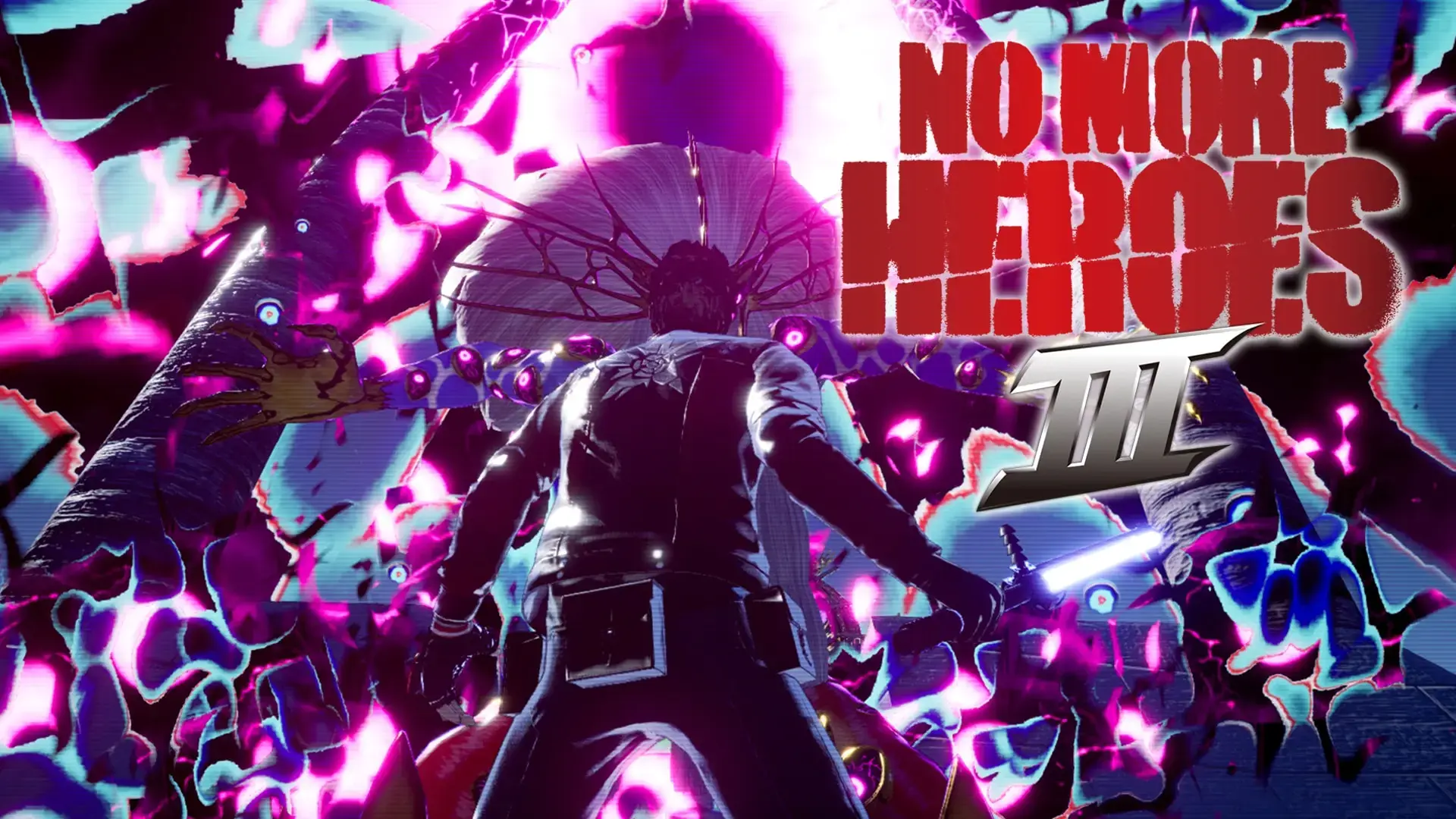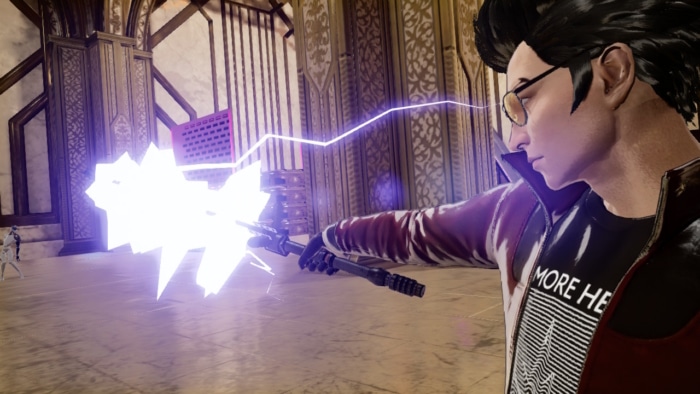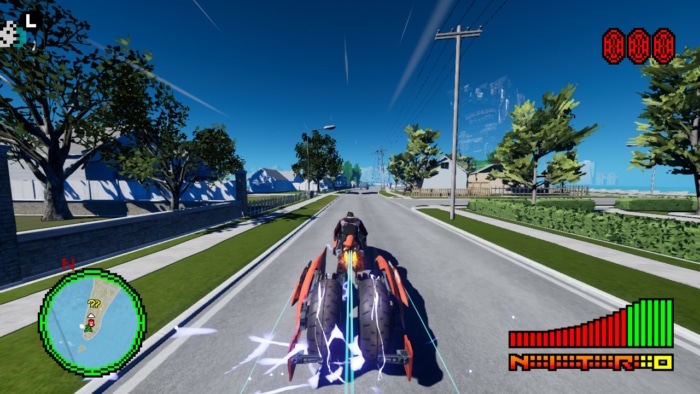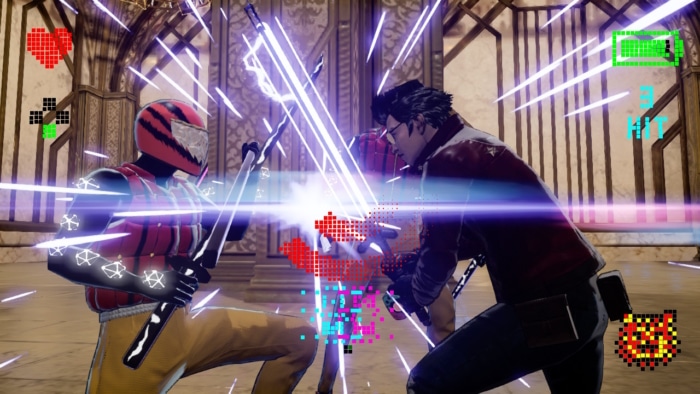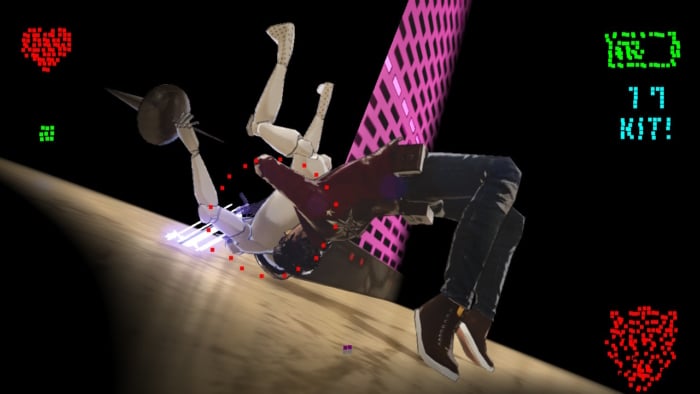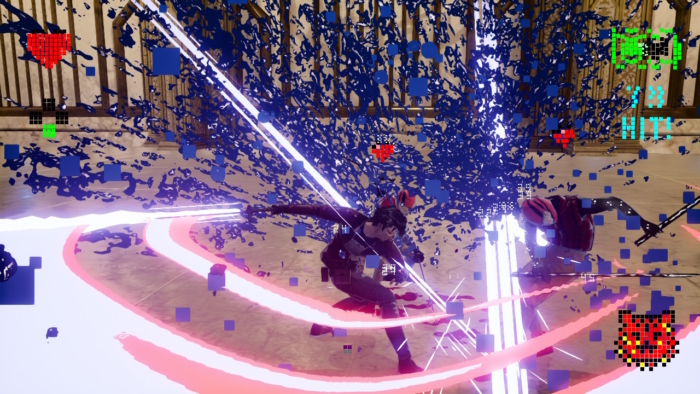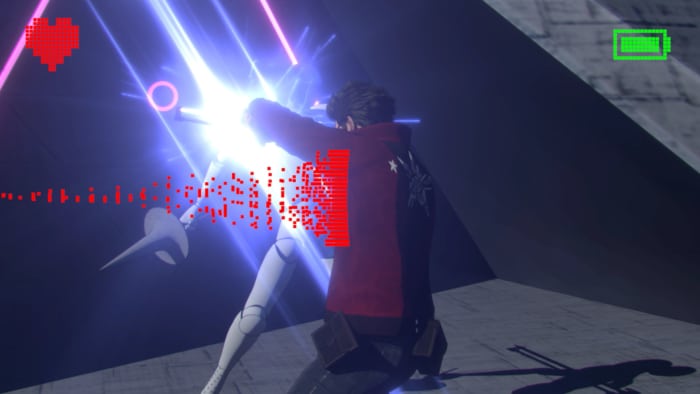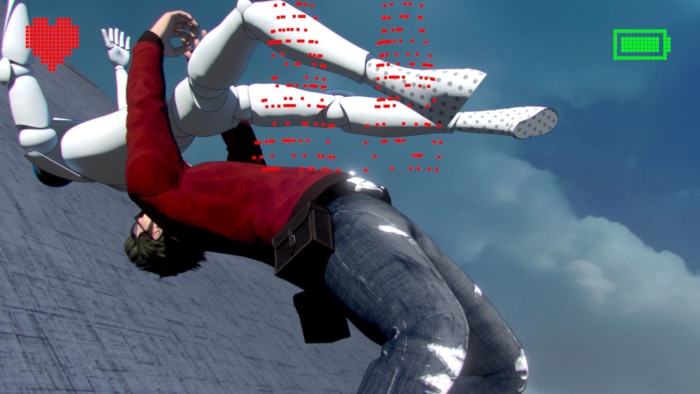No More Heroes III
-
A relentlessly cool artistic experience
-
Subversive, wild story
-
Laugh-out-loud funny and unabashedly weird
-
Long load times
-
Some technical hiccups
-
Repetitive mini-games
The cult classic makes a triumphant return in all of its kitschy genre-bending Tarantino-esque glory, as irreverently fun and rough-around-the-edges as an experimental noise-punk EP recorded on cassette. Part hack-n-slash beat-em-up, part mini-game collection, and an all-around good (but flawed) time.
Welcome to the Garden of Insanity
The third and allegedly final instalment in a trilogy that actually has five games, No More Heroes III knows it has to go big. It follows an ageing misanthropic nerd with the improbably cool name of Travis Touchdown, who accidentally bought a functional lightsaber on eBay and immediately decided, as any of us would, to become the world’s greatest professional killer. The game follows the pattern of its predecessors, where a series of boss fights moves the plot forward, but between them you’ll be exploring an open world, doing menial labour like mowing lawns to make some money, searching for collectables such as stray kittens and scorpions to make into ramen, fighting in arena-style smaller battles to gain experience, and trying to find t-shirts to look super cool while doing it.
Unlike previous titles which largely skewered American cinema of the 1970s, No More Heroes III takes a swing at Marvel. The essential plot starts with a gorgeously animated anime-style intro movie where a boy finds an alien who crash-landed on Earth and helps him return to his people E.T. style. We then flash forward to the present, where the now-adult alien has returned to his former friend after having escaped from Space Jail. He and his gang of galactic ne’er-do-wells declare themselves “superheroes” intent on planetary conquest unless any warriors of Earth can fight their way through the ranks and challenge the Big Bad himself.
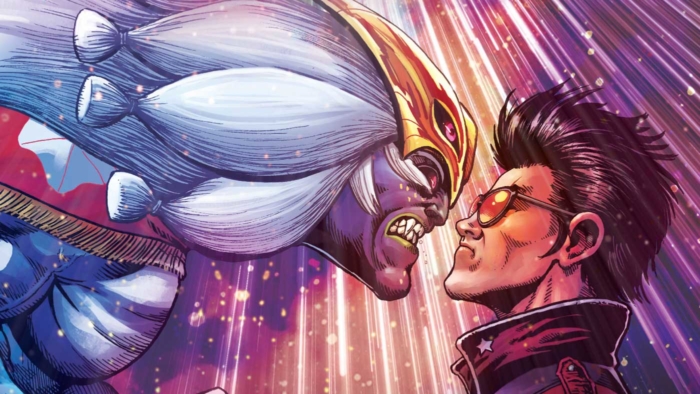
Arguably the core of the gameplay is the combat, which actually feels extremely satisfying. There’s nothing particularly in-depth here: you mostly have a light attack, a heavy attack, a dodge, and a few more specialized “spells” on a cooldown. Combat is fast and frantic, and Travis’ penchant for growling sophomoric profanity, sick pro-wrestling moves, and geysers of blood add up to a whole that is gratuitous, gratifying, and gleeful.
One Man’s Treasure…
Describing the gameplay of No More Heroes III is like describing the brand of paint Van Gogh used: you’re not really getting what’s special about the whole. No More Heroes III is a giddy collection of defiant subversion, pastiche, condemnation, and celebration. Every time you think you’ve got a lock on what the game has to offer, it throws a curveball directly at your face to keep you guessing. It’s a truly funny game that delivers comedy through its absolute contempt for the fourth wall. It is a game that changes styles and aesthetics like clothes, a gaudy mishmash that borrows so much from so many places that it becomes something entirely new. Playing No More Heroes is like drinking the fetid juice at the bottom of culture’s dumpster and finding out that it’s actually pretty tasty. This game is relentlessly, insanely stylish, from the pause menu designed to look like Windows 98 to the mix of 3D modelling, pixels, video, and 2D animation: it somehow makes a cohesive, stylistic whole, something that feels conspicuously absent from nearly all modern games.
All the best satire comes from a place of love, and No More Heroes III is no exception. It both relentlessly mocks and celebrates the best and worst of American culture as experienced by a Japanese mortician-turned-pro-wrestler-turned-game-designer — that is, the game’s iconoclastic director Suda51. Without spoiling the game’s many surprises, expect to see lots of riffs on 70s B-cinema, anime, other video games, and music (Travis’ default t-shirt is an obvious homage to Joy Division’s Unknown Pleasures album cover).
…is Another’s Man’s Trash
And here is the difficult crux of criticism. This is a game that appeals to my exact interests, so it is perhaps difficult to be objective. I want to be clear: I absolutely love this game, this series, and this creator. Many years ago, as a final project for one of my college courses, I wrote an incredibly in-depth essay analyzing the oeuvre of Suda51 using the lens of Auteur Theory. I’d say this is one of my favourite games I’ve ever played, but I’m not blind to its many flaws. All of this is to say that No More Heroes III is a great game, but it might not be a good game.
No More Heroes III has a few technical issues, particularly long load times. I found myself playing with my phone close at hand so I could browse Twitter whenever I opened a door or went to another area. The open-world aspect of the game is, frankly, pretty unappealing. It’s fairly featureless and is plagued by pop-in and frame rate drops. The various odd jobs that can be done are repetitive and not all that much fun. Perhaps there’s a point being made there, but I play games for escapism and I’d like to not be reminded of the drudgery of minimum-wage work.
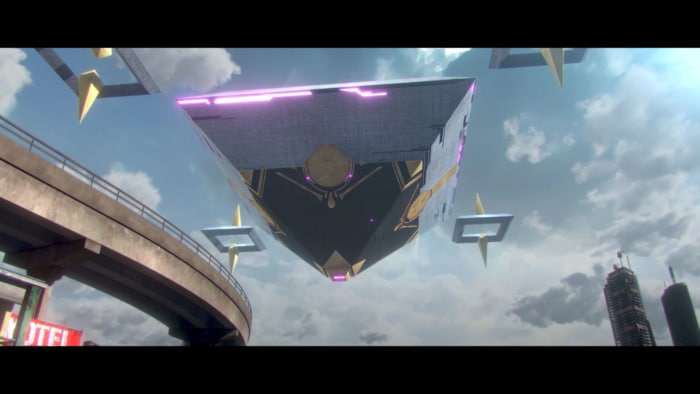
The multi-phasic final boss was something of a low point of the game, as his fight mostly consisted of waiting for him to finish his many areas of effect attacks and do the one attack which makes him vulnerable. Most of the final boss of the final game in this franchise consists of standing around and waiting, making the game feel like it’s going out not with a bang, but with a disappointing little fart.
Perhaps most frustrating of all is seeing a game that didn’t learn the best lessons from its predecessors. Gone is the extensive clothing customization of the first game and the surprisingly fun 8-bit mini-games that took place of the odd jobs in the second.
The Strawberry on the Shortcake
Complaining about the technical shortcomings and repetitive gameplay of aSuda51 game is like complaining about the dialogue in a Ron Fricke film: you’re here for the wrong reason, buddy. No More Heroes III is the rarest of the rare: a truly unique cohesive artistic experience in the medium of interactive gaming, a strong argument in favour of auteurs having a place in video games. It’s surreal, it’s hilarious, it’s comically over-the-top violent: it is an indictment of American culture (Travis, despite being the world’s most successful psychopath as essentially a hobby, is also weirdly sexless — character traits all too familiar to anyone familiar with American media sensibilities) and a celebration of it (in one weirdly affecting moment, after murdering an obvious Lady Gaga analogue on stage, the crowd goes wild like a Phantom of the Paradise reminiscent blood sacrifice). It draws from esoterica and pop culture and ends up with a social commentary that, despite (or because of?) its complete lack of self-seriousness, is even more effective than something like Bioshock. It is a game that loves transgressing norms as much as it loves adoring them. It’s like going to the aquarium on mushrooms: an astoundingly weird and fun time.
Final Thoughts on No More Heroes III
If you’re looking for a fun hackathon to engage with on a surface level, No More Heroes III might fall short. If you’re willing to put in a little intellectual elbow grease (or, like me, are just a gigantic nerd with an abiding love of all things kitsch), it may well be one of the best and most unique experiences of this console generation.
Really, there’s nothing else like it. Except for the other four games in the series, I guess.

